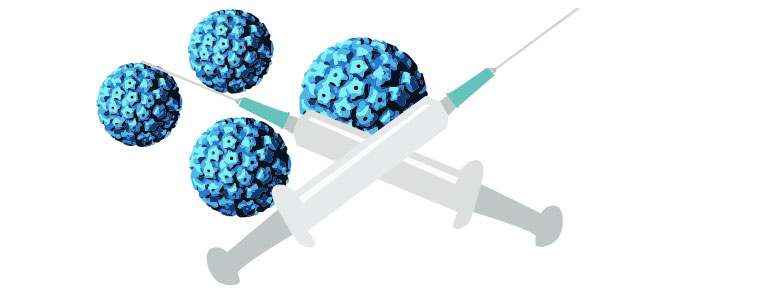The human papillomavirus, also known as HPV, is a serious issue. Luckily, a new vaccine has been shown to protect against nine different forms of the cancer-causing strains of HPV.
There are over 100 strains of the virus, with about 60 resulting in harmless warts that tend to crop up on hands or feet, while the other 40 strains affect the genitals and/or anus of the infected individual. The common HPV vaccination, known as the quadrivalent vaccine, protects against only four of those strains. Given that there are actually nine high-risk strains of the virus, vaccinated people were previously unprotected against five high-risk strains before the new vaccine was introduced.
According to a study published in the New England Journal of Medicine, the new vaccine was tested over a period of 54 months in a group of 14,215 women from 18 countries, ages 16 to 26. Half of the sample was randomly assigned to receive the new 9-valent vaccine (named thus because it protects against all nine strands of the virus), while the other half received the quadrivalent inoculation, which covers four forms of the virus. The groups were similar in health and sexual behavior characteristics.
The vaccine was highly successful in preventing the high-risk strains of the virus, and resulted in only slightly increased discomfort at the inoculation site.
“I think vaccinations like this one have many benefits,” said sophomore sports and exercise science major Alex Souther. “But I haven’t heard anything about this new vaccination, which might be indicative of the idea that not many [Seattle University students] know enough about it.”
Souther’s concerns regarding public education on the HPV vaccination echo larger national concerns about public knowledge surrounding HPV prevention. While the quadrivalent HPV vaccine has already helped to bring about a steep drop in the prevalence of HPV among teenagers, its negative stigma because of its association with sex and a general lack of knowledge about it has caused its use in the United States to be limitied.
“I’ve learned a little bit about HPV in my microbiology class, plus I’ve gotten the shot, although I don’t think it was the new one,” said sophomore nursing major Brianna Wilson. She said that she thinks many girls only get the shot because they are advised to, rather than getting it because they know what it does or what it is good for. “I think it’s a great development, but there needs to be more information available so people know about the benefits the shot offers.”
Recent increases in throat cancer incidence among groups considered low-risk led scientists to discover that the same types of HPV that infect the genital areas can infect the throat and mouth, resulting in cancers of the head and neck. Because current vaccines are designed to protect against cervical cancer, it remains unknown whether being vaccinated decreases the risk of contracting oral cancer. Studies deterimining if HPV vaccines will prevent oropharyngeal cancers remain to be conducted.
The new HPV vaccine shows that educating onseself about health is beneficial at any age, and that cervical cancer is a serious threat. According to the Centers for Disease Control and prevention, over 12,000 women were diagnosed with cervical cancer with over 4,000 fatal cases in the United States in 2011.
“With this [new] vaccine, almost all HPV-related tumors can be eliminated,” said Dr. Elmar A. Joura, an associate professor of gynecology at the Medical University of Vienna, told the New York Times.
Will may be reached at wmcquilkin@su-spectator.com









